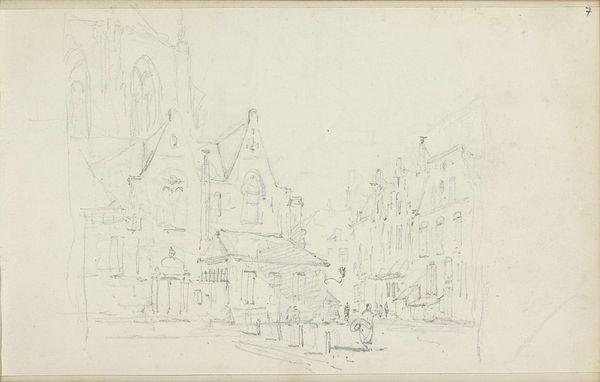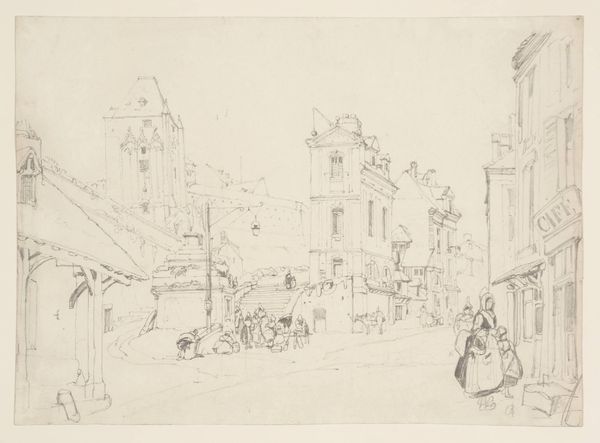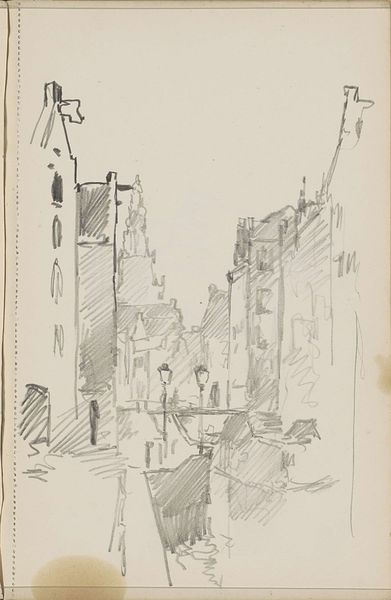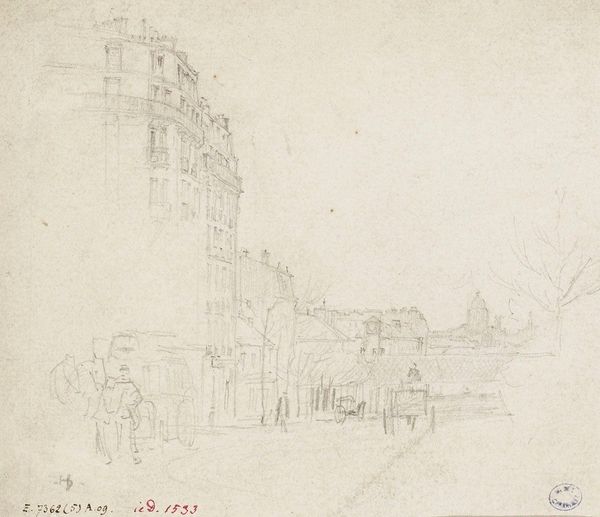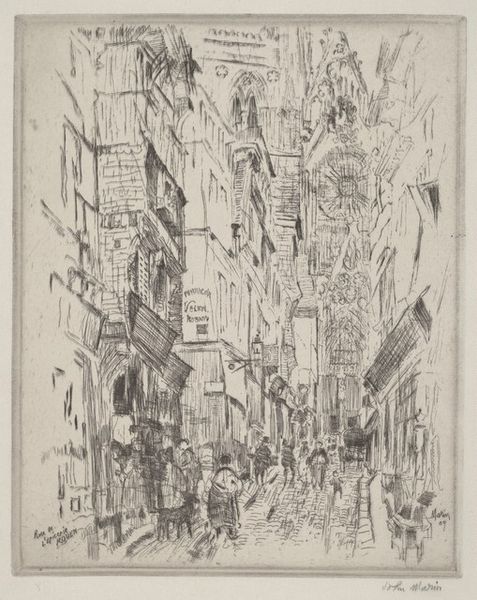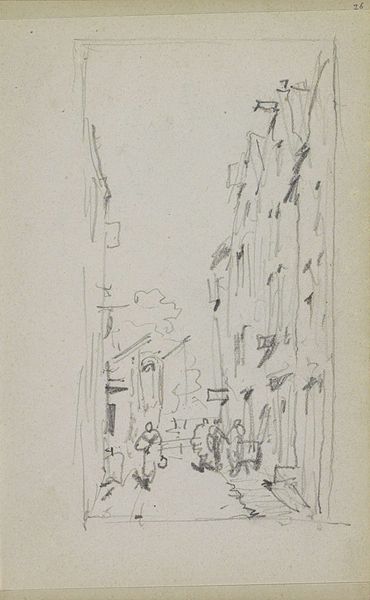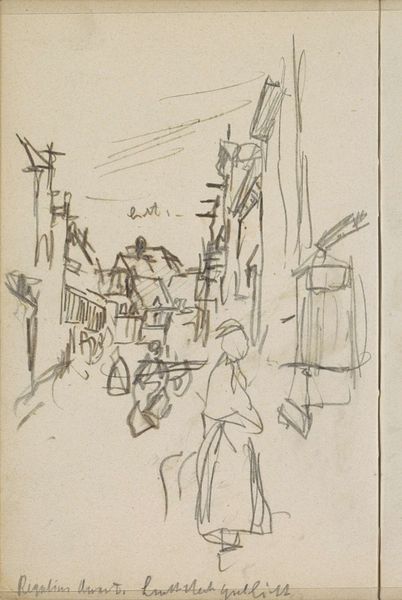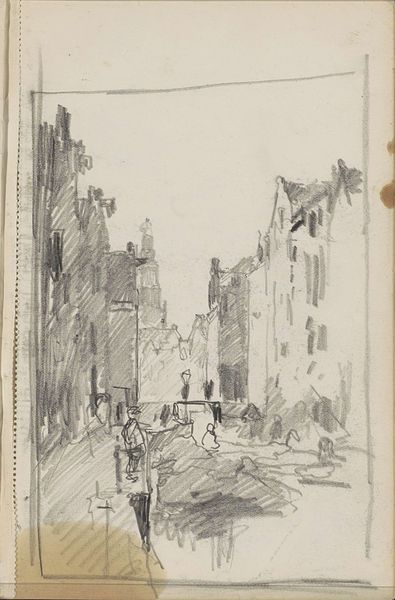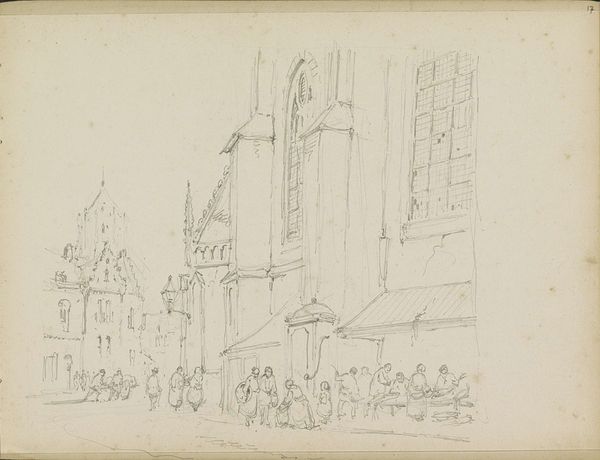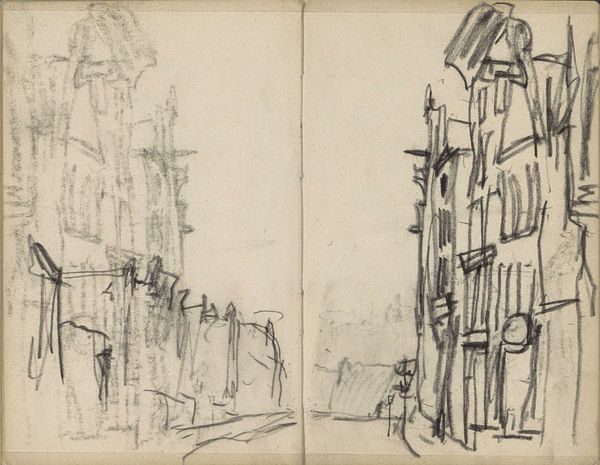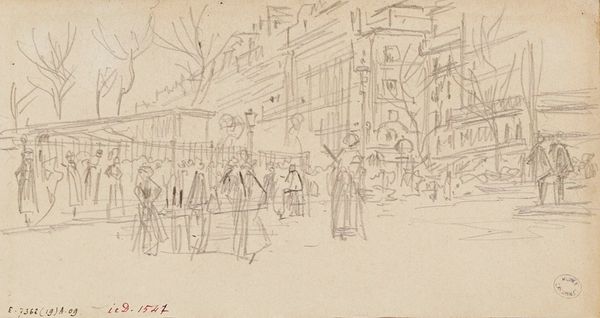
Copyright: Public Domain: Artvee
Curator: Here we have Frédéric Houbron's "Omnibus sur un boulevard," a pencil drawing made sometime between 1895 and 1905. What strikes you first about it? Editor: Immediately, I see movement and transience. The fleeting nature of city life is so well-captured through the soft pencil strokes. It evokes a feeling of a specific moment frozen in time. The light feels Parisian. Curator: The choice of subject aligns with the increasing modernization of Paris during the Belle Époque. The omnibus, a symbol of accessible public transport, became an integral part of Parisian society and popular subject in art representing urban progress. How does the presence of the omnibus resonate for you? Editor: Well, the omnibus dominates the scene, it speaks of transition. The wheels, the figures on top and alongside... all of these motifs indicate change, movement. Consider that while trains symbolized industrialization and the power of the industrial revolution, the horse-drawn omnibus has more classical connotations. In that respect it functions almost as a Roman chariot in triumphal entry... But into a new Rome: the modern city. Curator: The artistic interpretation here also contributes to that narrative. This sketch aligns with Impressionistic ideals, focusing on capturing a moment. By doing so, Houbron highlights the transient nature of modernity itself, of a moment of progress captured and memorialized. What meaning do you see within the composition, as far as cultural or emotional messaging goes? Editor: There's definitely a yearning or nostalgia in the style—Impressionism romanticizes the present moment even as it slips away. Look at the light brushstrokes, the suggestion, the incomplete architecture, all of those suggest things just out of reach, either coming or going. It could express the alienation from the growing impersonal city which began during industrialization, and the constant motion and lack of connection it encourages. I also notice that, aside from the horses, no one looks at each other. The whole scene seems vaguely alienated, like urban anomie put down on paper. Curator: Yes, it's almost melancholic, given the subject matter. These everyday modes of transport that should connote a city and its culture of progress seem, as you point out, alienated and alienating here, the city and its structures barely there behind the stage that is daily commute. Editor: Yes, ultimately I am moved by the sketch's ability to evoke more than just an image of a Parisian boulevard. It invites reflection on the experience of modern life itself. Curator: I agree. I’m now also rethinking it through that prism of urban alienation, which does add a darker aspect to the reading. Thank you.
Comments
No comments
Be the first to comment and join the conversation on the ultimate creative platform.
